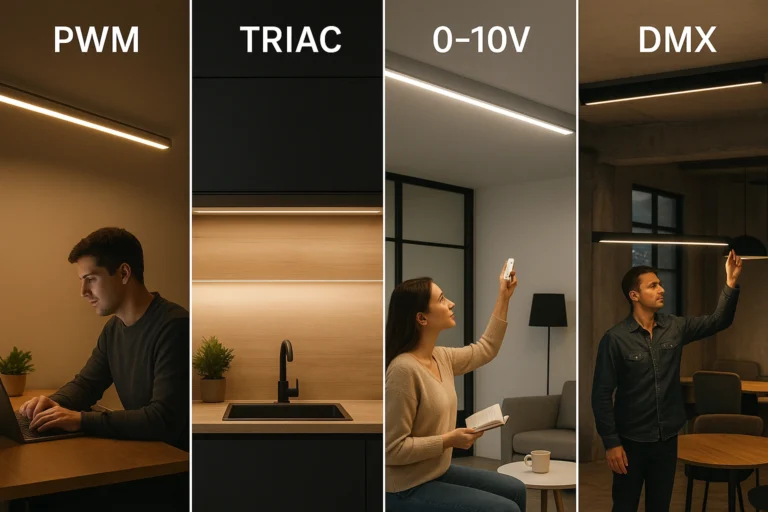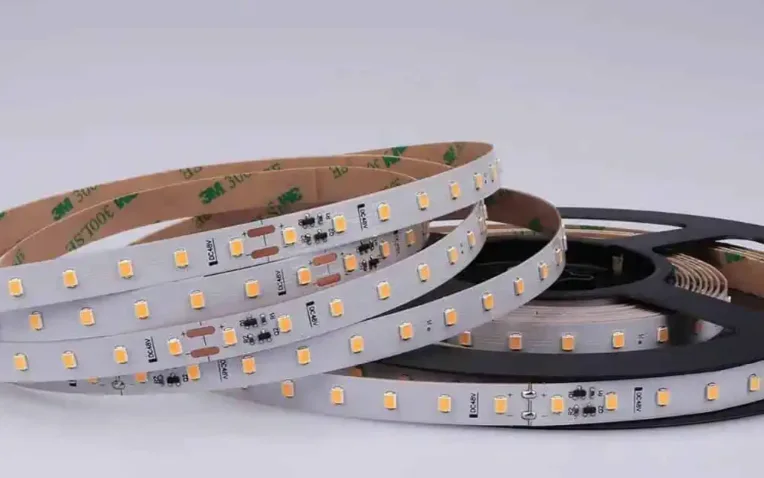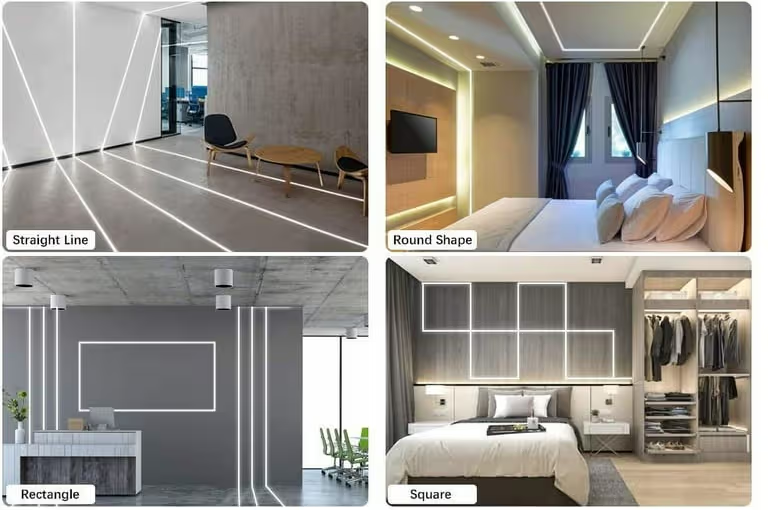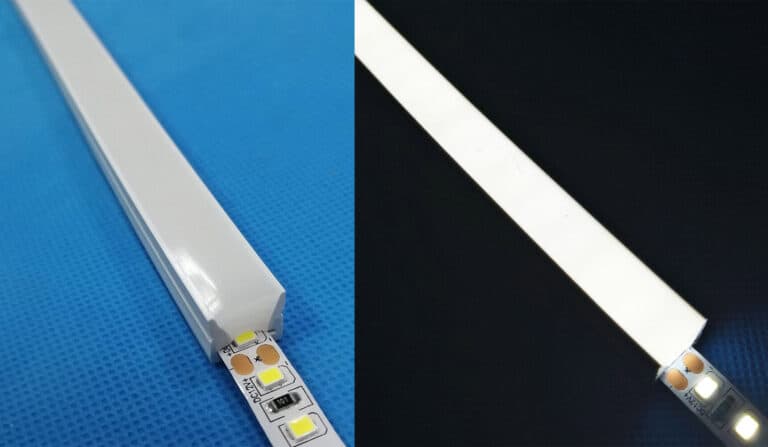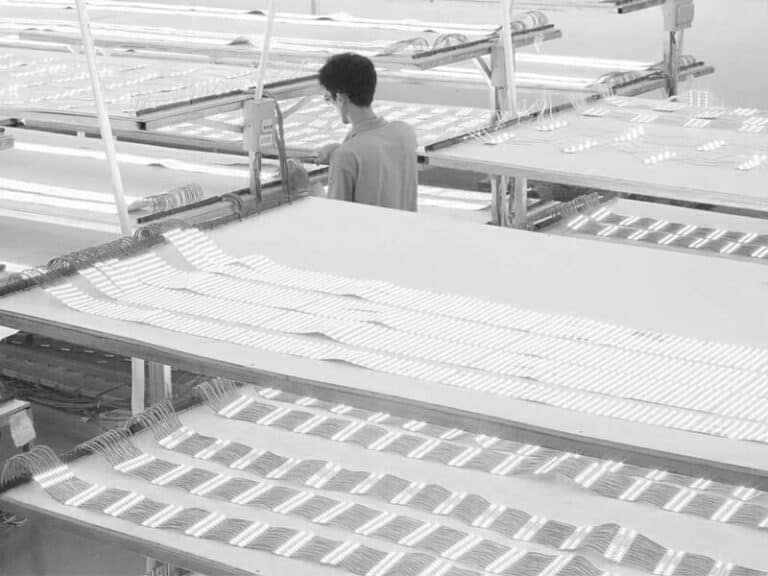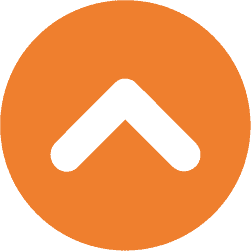In den letzten Jahren sind biegsame Linearleuchten zu einer beliebten Wahl für moderne Architektur- und Innenbeleuchtungsdesign geworden. Mit ihren schlanken Kurven und flexiblen Formen lösen sich diese innovativen Leuchten von traditionellen geradlinigen Einschränkungen und bringen mutige und futuristische Ästhetik in den Raum. Ob Zickzack-Muster, kreisförmige Deckenleuchte oder glatt geschwungene Wand-Funktion, biegsame Linearleuchten bieten Designern endlose kreative Möglichkeiten. In diesem Artikel werden die wichtigsten Arten von biegbaren linearen Lichtprofilen und deren praktische Anwendungen in verschiedenen Gewerbe- und Wohnprojekten untersucht. Wenn Sie nach Lichtlösungen suchen, die Stil, Leistung und Flexibilität kombinieren, ist biegsame lineare Beleuchtung die perfekte Option.
Was ist ein biegbares lineares Licht?
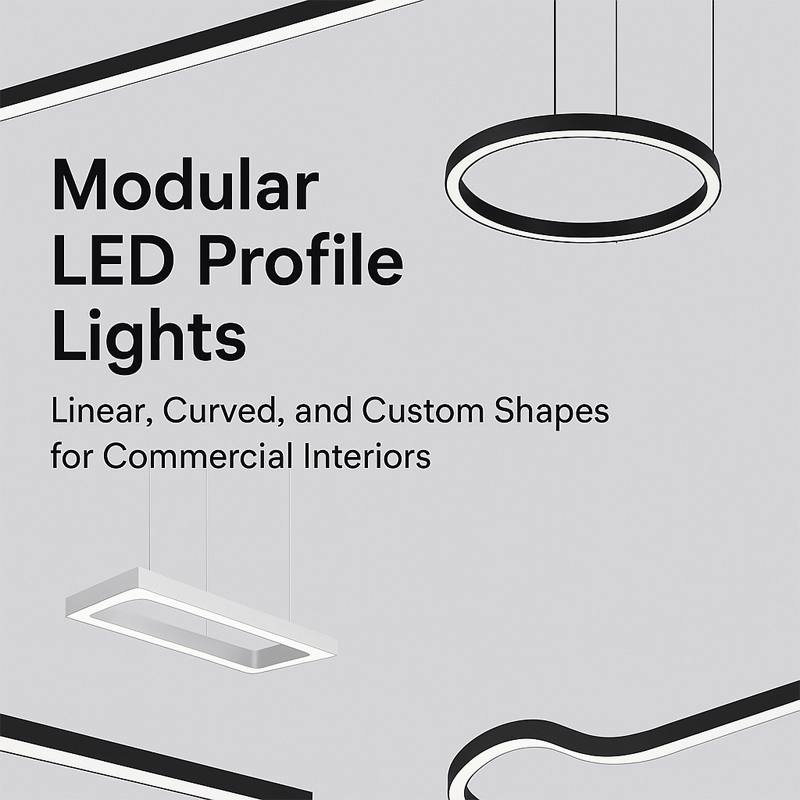
Ein biegbares lineares Licht - auch als flexibles lineares Licht, gebogenes LED-Profillicht oder maßgeschneidertes Linearlicht bezeichnet - ist eine Art LED-Beleuchtung, die dazu bestimmt ist, sich entlang bestimmter Formen oder Oberflächen zu biegen oder zu biegen. Im Gegensatz zu Standard-Streckleuchten werden biegbare Versionen aus speziellen Aluminiumprofilen und flexiblen Leiterplattenstreifen hergestellt, sodass sie gebogene Decken, abgerundete Ecken oder kreative geometrische Linien folgen können.
Diese Leuchten sind ideal für moderne Innen- und Architekturprojekte, bei denen gerade Linien möglicherweise nicht zum Design passen. Mit Optionen wie Seitenbiegung (horizontale Kurven) oder Top-Biege (vertikale Kurven) bieten sie ultimative Flexibilität im Layout. Ob in Zickzack-Muster, kreisförmigen Lichtdesigns oder künstlerischen Kurven, biegsame Linearleuchten bieten ein schlankes und nahtloses Aussehen, das den gesamten Raum erhebt.
Zu den wichtigsten Vorteilen gehören:
Kreative Freiheit im Lichtdesign
glatte und kontinuierliche Lichtleistung
Kompatibilität mit gebogenen oder unregelmäßigen Oberflächen
Moderne, hochwertige Ästhetik
Unterstützung für benutzerdefinierte Längen, Farbtemperaturen und Dimmen
Wenn Sie sich mit einem komplexen Raum befassen, in dem Standardleuchten nicht funktionieren, ist biegsame lineare Beleuchtung die intelligente Lösung. Weitere Informationen darüber, wie wir kundenspezifische Beleuchtungsanforderungen mit hauseigenem Biege- und Aluminiumprofildesign unterstützen, finden Sie in unserem Artikel:

Arten von biegbaren linearen Lichtprofilen
Biegbare Linearleuchten sind in einer Vielzahl von Formen und Konfigurationen erhältlich, um den Anforderungen verschiedener architektonischer Projekte gerecht zu werden. Aufgrund ihrer Geometrie, Biegerichtung und Biegestruktur können sie in die folgenden Typen eingeteilt werden:
1. Basierend auf der Form: regelmäßige vs. unregelmäßige Formen
Normale Formen
Dazu gehören geometrische Formen wie Dreieck, Quadrat, Oval, Polygon und kreisförmige biegbare lineare Lichter. Diese Profile werden häufig in modernen Bürodecken, öffentlichen Räumen und dekorativen Zonen verwendet, in denen symmetrische Ästhetik bevorzugt wird. Ein rundes LED-Linearprofil ist beispielsweise ideal für Kuppeldecken oder Beleuchtung, während quadratische biegbare Profile in der Rasterbeleuchtung beliebt sind.
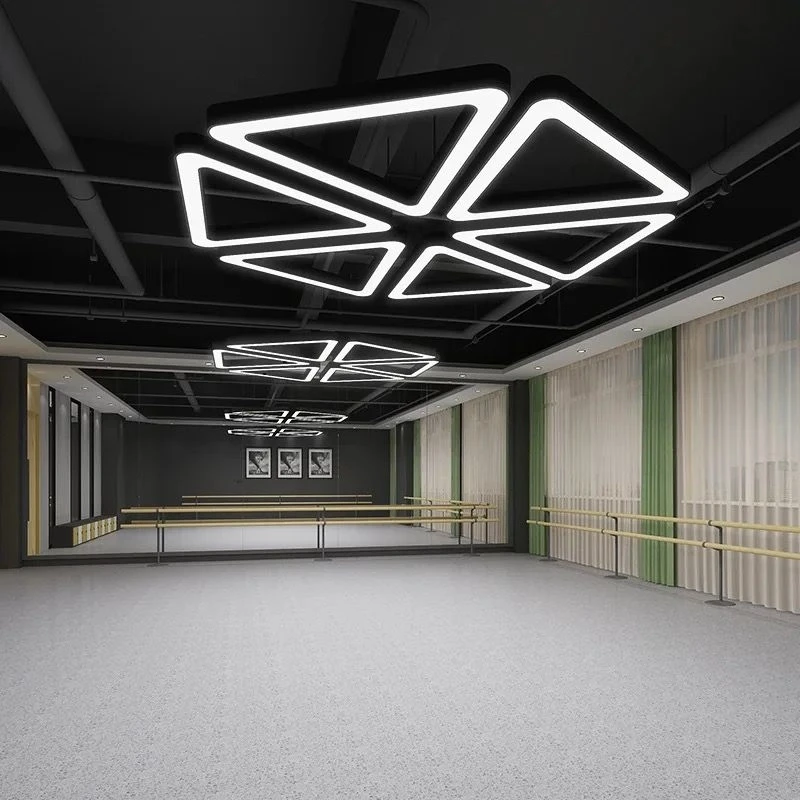
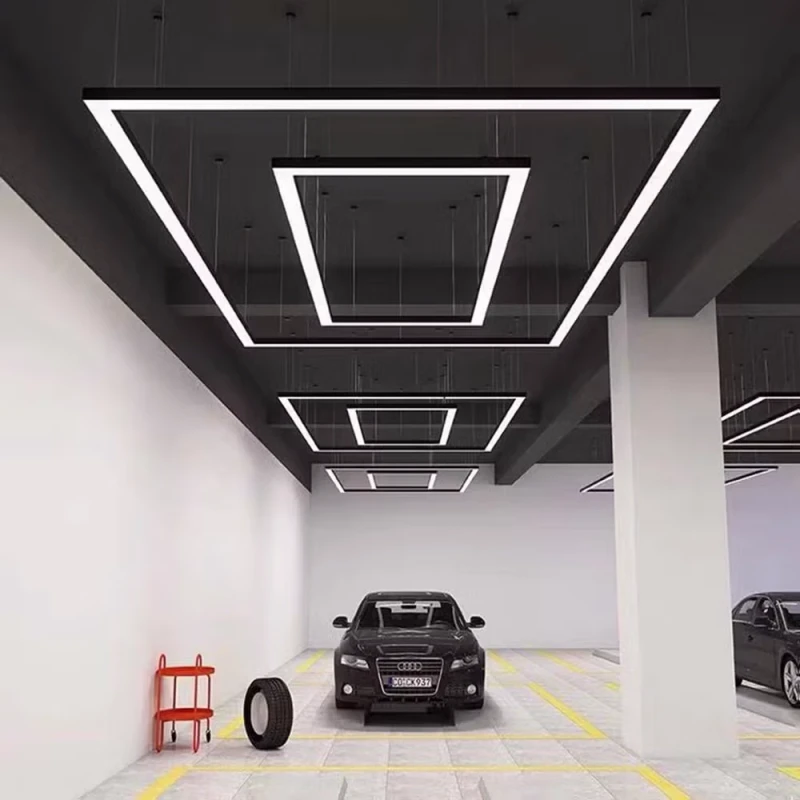
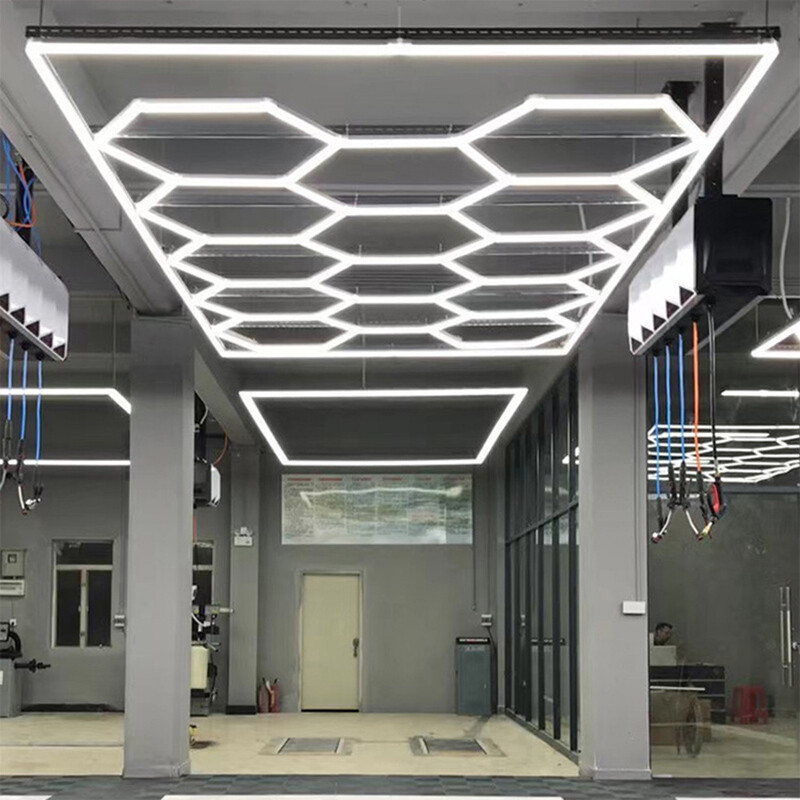
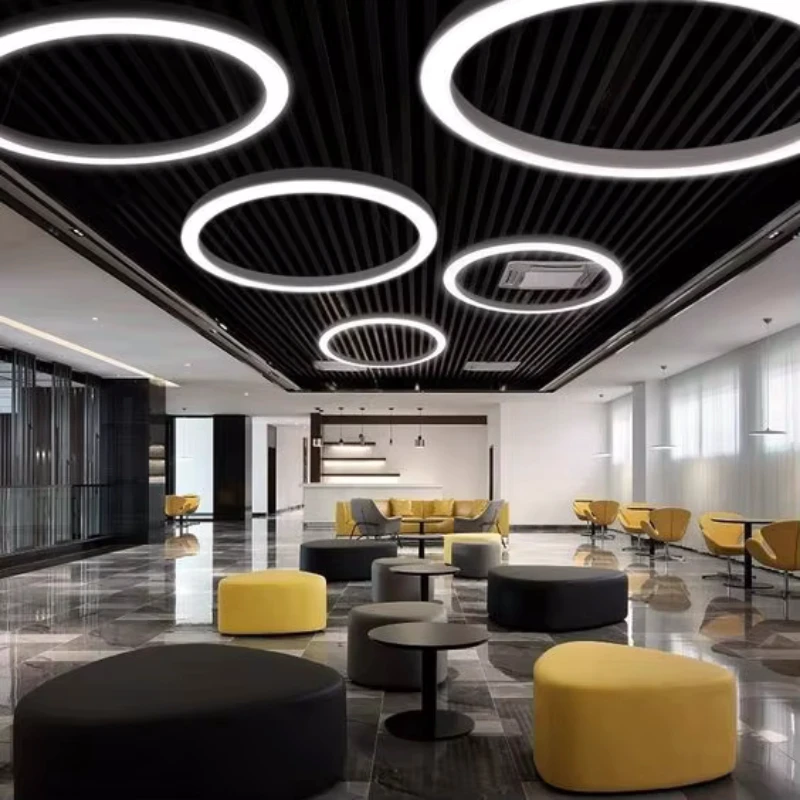
unregelmäßige Formen
Diese Designs bieten mehr kreative Freiheit und umfassen Formen wie Zickzack, S-Form, Mondform und Zellkombinationsprofile. Insbesondere das Zickzack-LED-Linearlicht wird häufig in Korridoren, Ecken und kantigen Einzelhandelsdisplays eingesetzt. S-förmige oder wellenförmige Profile sind ideal für dynamische Deckenmerkmale, während mondförmige und benutzerdefinierte Kurven einzigartig konturierte architektonische Elemente anpassen können.
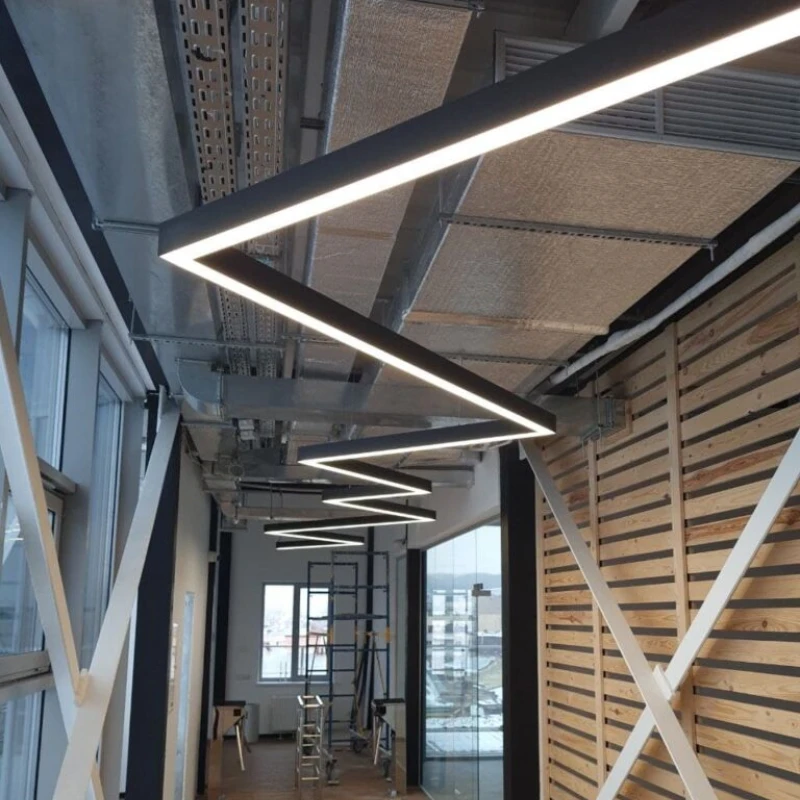
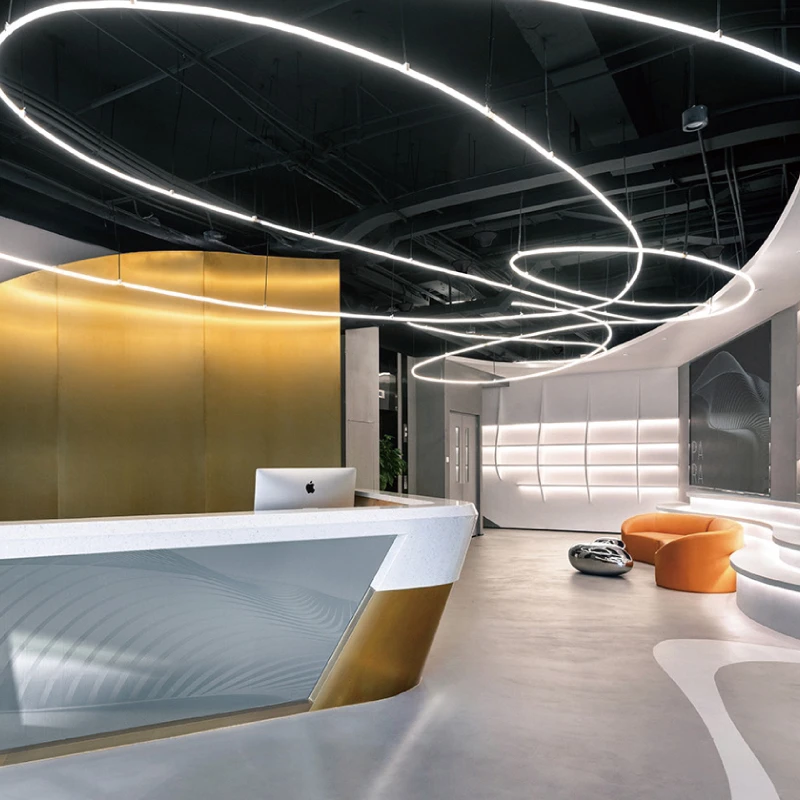
2 . Basierend auf Biegerichtung: Seitenbiegung vs. oben Biegen
Seitenbiege-Lineare biegen sich horizontal entlang der Länge der Leuchte, geeignet zur Bildung horizontaler Bögen und Wandkurven.
Top Biege-Linearlichter biegen vertikal, perfekt für wellenförmige Decken oder Installationen, die Höhenänderungen erfordern.
Die Wahl der richtigen Biegerichtung ist entscheidend, um eine nahtlose Anpassung an die Oberflächengeometrie des Projekts zu gewährleisten.
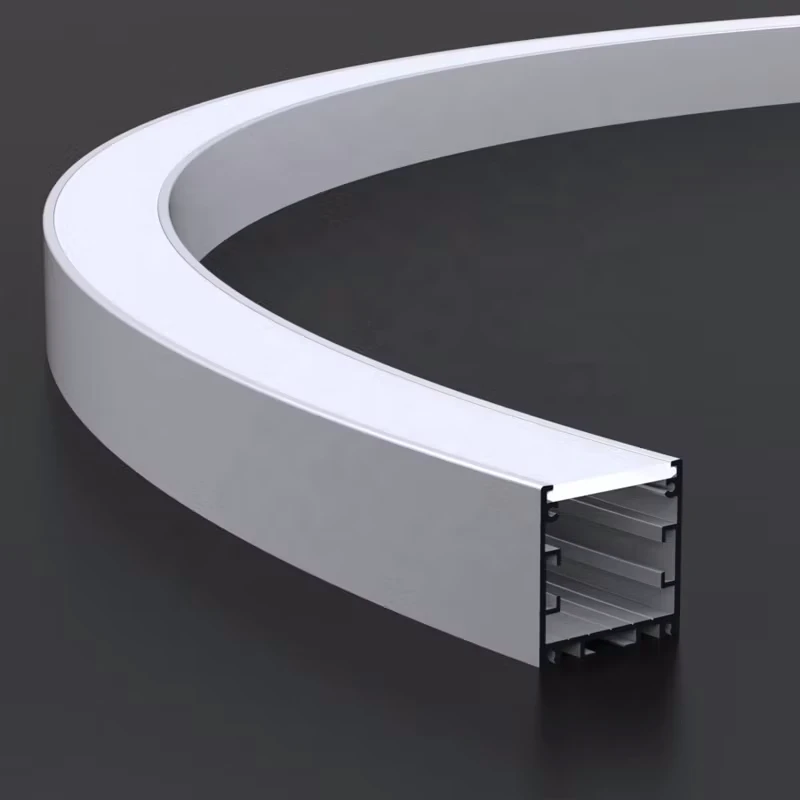
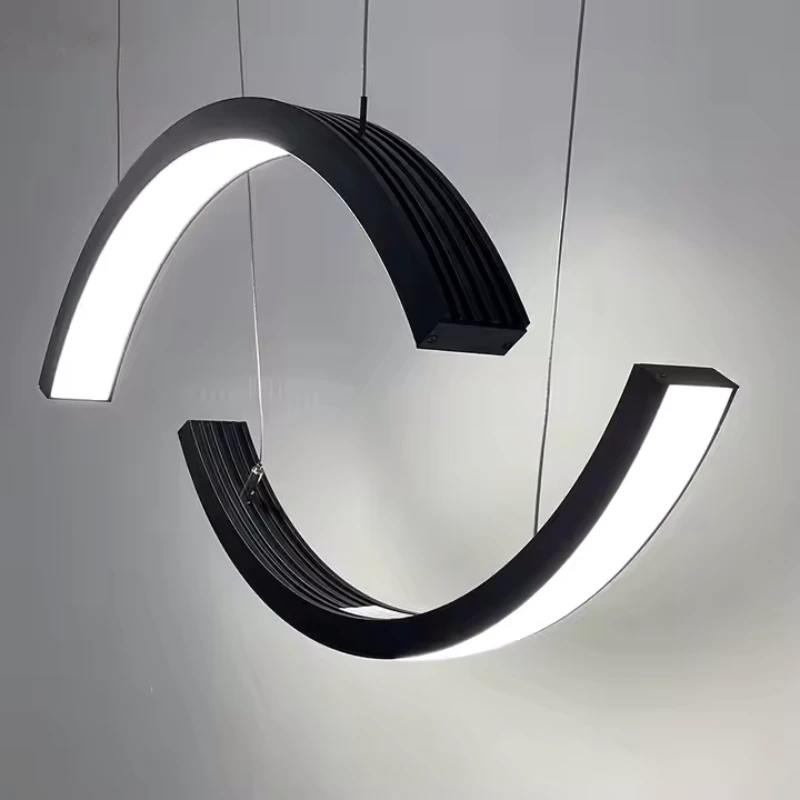
3. Basierend auf der Biegemethode: Integrierte vs. Split-Typ-Biegen
Integriertes Biegen (Einteiliges Biegen) bezieht sich auf LED-Linearprofile, die als eine Einheit extrudiert und gebogen werden. Diese sind elegant, robust und ideal für Kunden, die ein sauberes Erscheinungsbild und eine schnelle Installation benötigen.
Split-Typ-Biegen (Montage-Biegen) Das Abbiegen des Aluminiumprofils und des Diffusors wird dann getrennt zusammengebaut. Dieses Verfahren bietet größere Flexibilität bei großflächigen oder komplexen Installationen und erleichtert den Transport und die Anpassung vor Ort.
Jede Art von biegbarem linearen Licht dient einem einzigartigen Zweck in der Architektur- und Innenbeleuchtung. Die Auswahl der geeigneten Form, Richtung und Struktur wirkt sich erheblich auf die visuelle Wirkung und die Installationseffizienz aus.
Anwendungen von biegbaren Linearleuchten
Biegbare lineare Leuchten bieten grenzenlose Gestaltungsmöglichkeiten und werden in architektonischen, gewerblichen, Wohn- und kreativen Umgebungen weit verbreitet. Ihre flexible Form ermöglicht eine nahtlose Beleuchtungsintegration, bei der starre Leuchten zu kurz kommen. Nachfolgend finden Sie wichtige Anwendungskategorien mit Beispiel-Setups und vorgeschlagenen Produktlösungen.
1. Architekturbeleuchtung – Geschwungene Decken und Fassaden
In Luxushotel-Lobbies oder Empfangsbereichen können große kreisförmige oder mehrschichtige ringförmige Linearleuchten von gebogenen Decken abgehängt werden, um einen atemberaubenden zentralen Mittelpunkt zu schaffen. Diese Leuchten liefern sowohl Beleuchtungs- als auch architektonische Auswirkungen.
Empfohlenes Produkt:
Top-Biegung rundes LED-Linearprofil mit Opal-Diffusor, 3000K warmweiß, DALI-Dimmen unterstützt
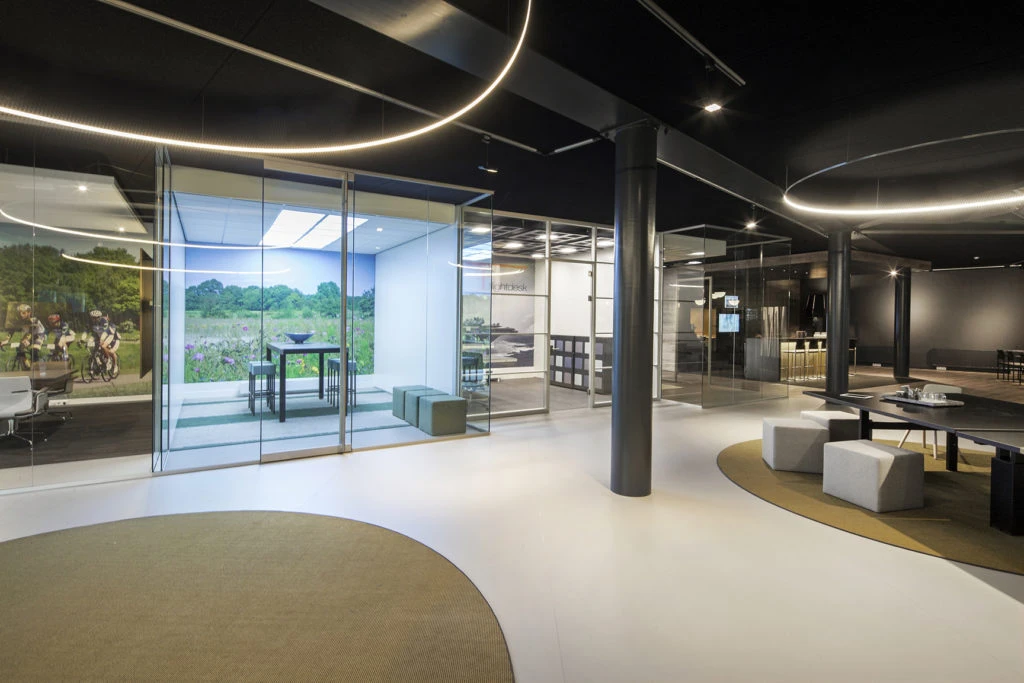
2. Retail & Display Beleuchtung – Kreatives Visual Merchandising
Einzelhandelsgeschäfte installieren häufig Zickzack- oder winkelige biegbare Lichter über Produktwänden oder Regaldisplays, um eine trendige und moderne Atmosphäre zu unterstreichen. Die scharfen Linien und dynamischen Winkel ziehen visuelle Aufmerksamkeit auf sich und helfen dabei, Produktzonen zu definieren.
Empfohlenes Produkt:
Zickzackförmiges biegbares Aluminiumprofil mit 2835 LED-Streifen, CRI90+, 10W/m, 24V Eingang
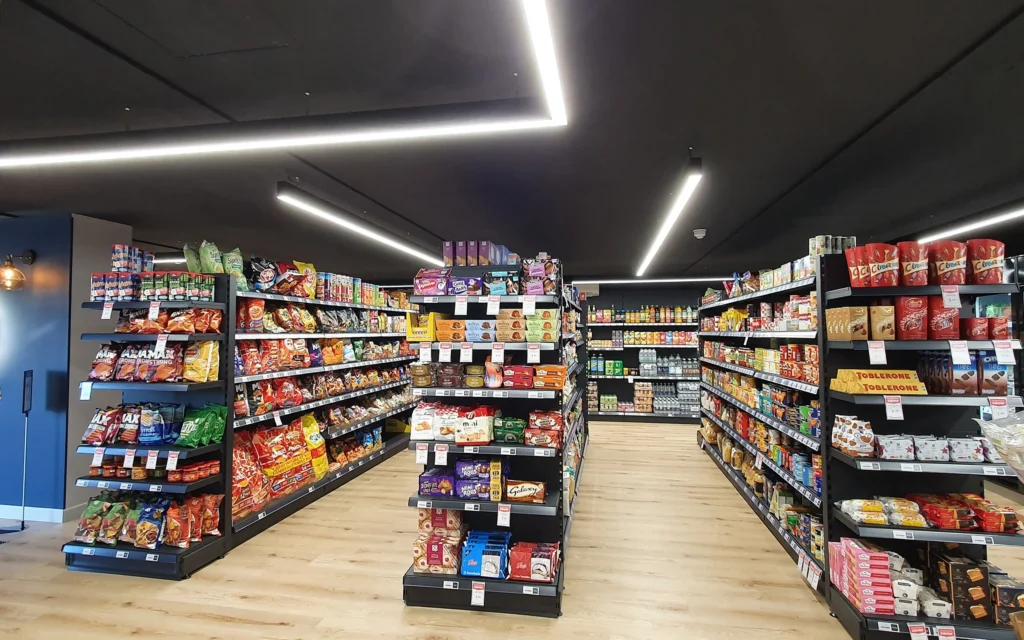
3. Wohnbeleuchtung – Benutzerdefinierte Decken- und Wandfunktionen
In hochwertigen Wohnräumen oder Heimkinos können seitlich gebogene lineare Lichter zur Erstellung von Halbmond- oder mondförmigen Deckenumrissen verwendet werden. Diese Formen verleihen Weichheit und Tiefe und sorgen gleichzeitig für funktionelles Umgebungslicht.
Empfohlenes Produkt:
Side-Bing-LED-Linearprofil mit punktfreiem COB-Streifen, 4000K neutralweiß, 8mm Leiterplattenbreite, IP44 Innenbereich
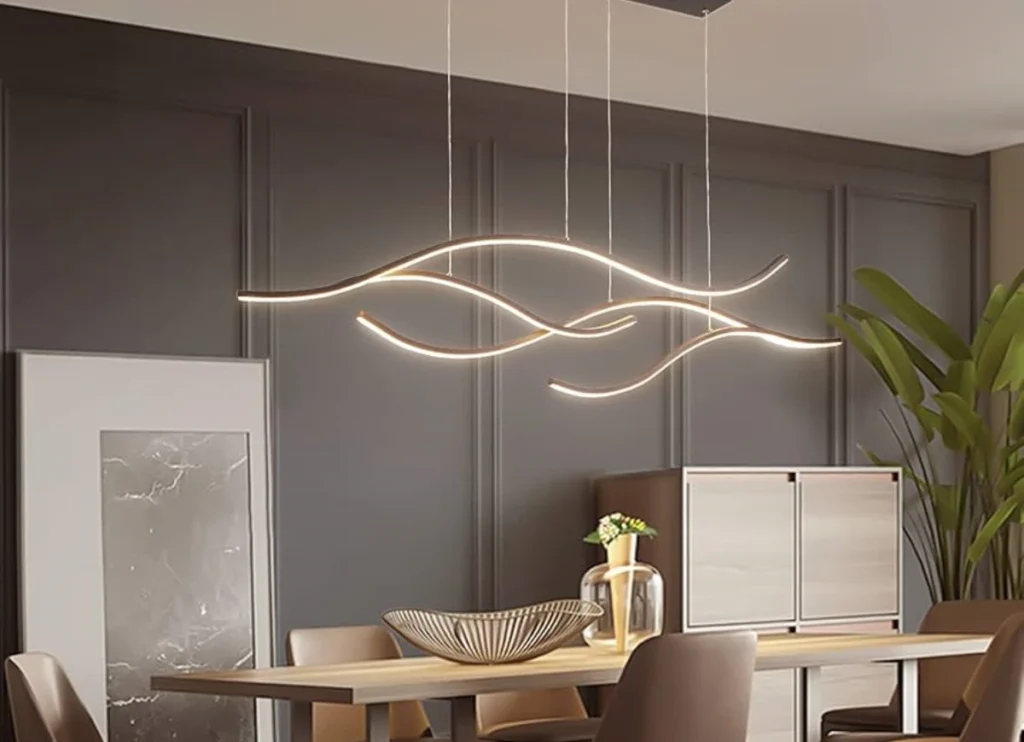
4. Öffentliche & Gewerbeflächen – Korridor und Wegbeleuchtung
Lange Korridore in Flughäfen, Galerien oder Büros können polygonale oder durchgehend biegbare Beleuchtung entlang von Deckenlinien oder Wandübergängen enthalten. Diese Designs verbessern die Sichtbarkeit und verleihen dem Raum ein elegantes, zeitgemäßes Aussehen.
Empfohlenes Produkt:
Integriertes polygonales LED-Linearlichtsystem, 48 V Konstantspannung, 30 W/m, PMMA-Diffusor, Notfallsicherung optional
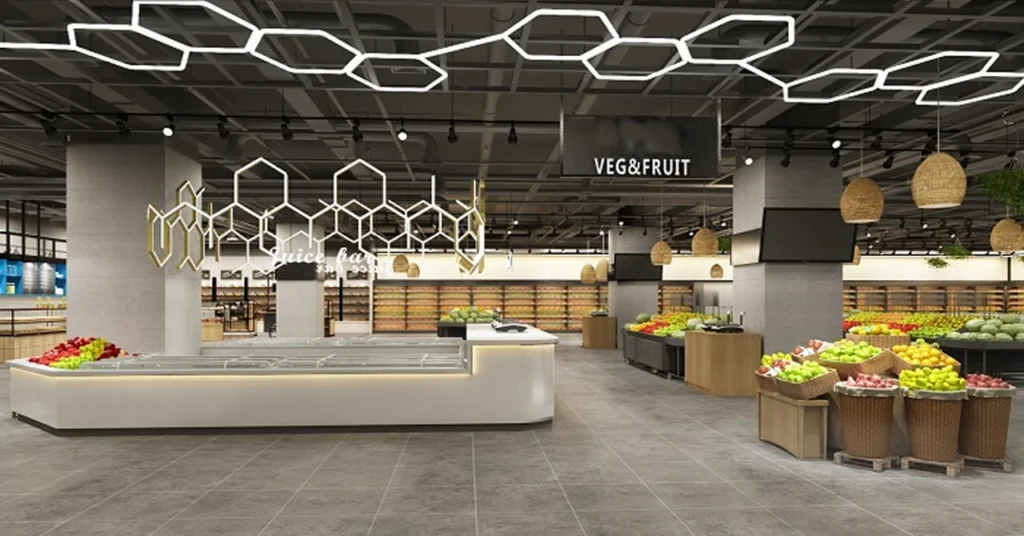
5. Kreative Installationen & künstlerische Projekte
Kunstgalerien, Themenrestaurants oder Ausstellungsräume verwenden häufig unregelmäßige Formen wie biegbare Kombinationszellen- oder Wellenformen, um markante visuelle Installationen zu erzeugen, die Licht, Form und Geschichten erzählen.
Empfohlenes Produkt:
Anpassbares Kombinations-Zellenprofil mit RGBW-LED-Streifen, DMX512-Steuerung, Modulares Montagesystem
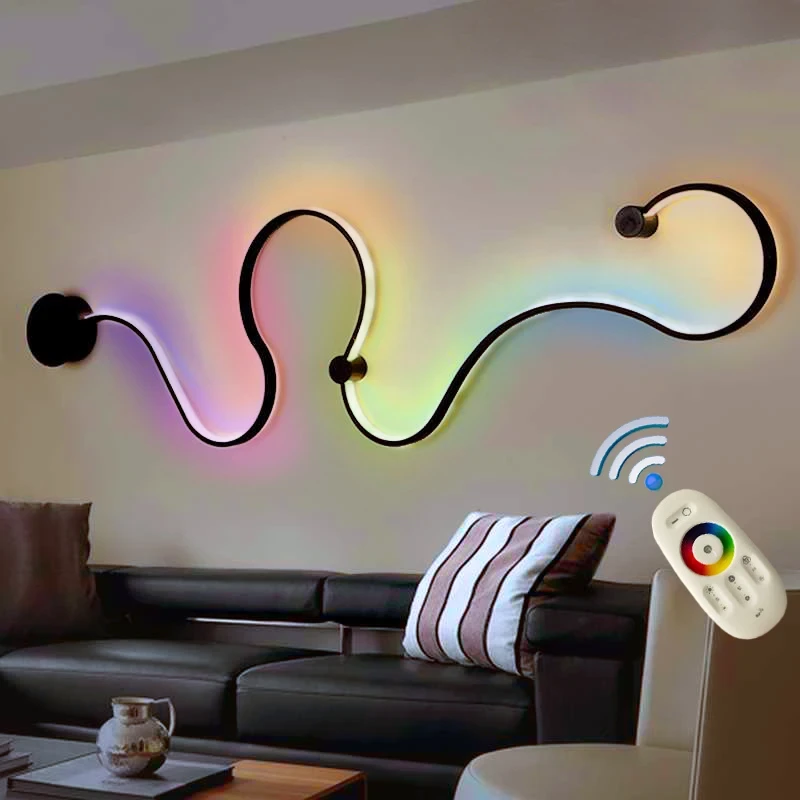
Biegbare Linearlichtanwendungen & Produktempfehlungen
| Anwendungsbereich | Typisches Designmerkmal | Empfohlene Produktspe |
| Architektonische Beleuchtung | Runde oder geschichtete Ringleuchten an gebogenen Decken | Top-Biegung kreisförmiges LED-Linearprofil, Opaldiffusor, 3000K Warmweiß, DALI-Dimmen unterstützt |
| Beleuchtung für Einzelhandel und Auslagen | Zickzack- oder eckige Wandleuchten | Zickzackförmiges biegbares Aluminiumprofil, 2835 LED-Streifen, CRI90+, 10W/m, 24V Eingang |
| Beleuchtung von Wohngebäuden | Mondförmige oder mondförmige Umgebungsdeckenmerkmale | Seitenbiegeprofil mit punktfreiem COB-Streifen, 4000K neutralweiß, 8mm Leiterplatte, IP44 Innenklasse |
| Öffentliche und kommerzielle Räume | Polygonale oder kontinuierliche Wegbeleuchtung in Korridoren | Integriertes polygonales LED-System, 48-V-DC-Eingang, 30W/m, PMMA-Diffusor, optionale Notfallsicherung |
| Kreative Installationen | Kombinationszelle oder unregelmäßige künstlerische Beleuchtung | Kundenspezifisches Kombinations-Zell-Aluminiumprofil, RGBW-LED-Streifen, DMX512-Steuerung, modulares Anschlusssystem |
So wählen Sie das richtige biegbare lineare Licht
Die Auswahl des richtigen biegbaren linearen Lichts ist entscheidend, um den gewünschten Lichteffekt zu erzielen und gleichzeitig eine reibungslose Installation und eine langfristige Zuverlässigkeit zu gewährleisten. Hier sind die wichtigsten Faktoren, die bei der Auswahl des am besten geeigneten Profils für Ihr Projekt zu berücksichtigen sind:
1. Bestimmen Sie die Biegeform und -richtung
Seitenbiegeprofile biegen horizontal und eignen sich für kreisförmige Wände, wellige Fassaden oder flache Oberflächendekorationen.
Top-Biege-Profile biegen sich vertikal, perfekt für wellige Decken, abgehängte Kurven oder geschichtete Hängeelemente.
Tipp: Berücksichtigen Sie die Oberflächengeometrie und den Einbauwinkel, um zu entscheiden, welche Biegerichtung zu Ihrem Design passt.
2. Wählen Sie die richtige Profilform
Passen Sie das Beleuchtungsprofil an Ihren Designstil an:
Regelmäßige Formen (Kreis, Quadrat, Dreieck) bieten eine saubere, geometrische Symmetrie.
Unregelmäßige Formen (Zickzack, Welle, S-Form) sorgen für einen dynamischeren und modernen Look.
Benutzerdefinierte Formen wie Waben- oder Mondprofile können Einzigartigkeit und Markenidentität in einen Raum bringen.
3. Wählen Sie zwischen integriertem oder geteiltem Biegen
Integriertes Biegen (einteiliges Profil) ist ideal für saubere Ästhetik und schnelle Installation.
Das Split-Type-Biegen bietet mehr Flexibilität für Transport und großformatige Designs.
Wählen Sie basierend auf Ihrer Installationsumgebung, Transportanforderungen und Profilgröße.
4. Legen Sie die Beleuchtungsparameter fest
Passen Sie die interne LED-Konfiguration an Ihr Projekt an:
LED-Typ: COB für punktfreies Soft Light, SMD für höhere Helligkeit
CCT (Farbtemperatur): Warmweiß für die Gastfreundschaft, neutral für Büros, kühles Weiß für den Einzelhandel
CRI: mindestens 90+ für handelsübliche Farbwiedergabe
Dimmen: DALI, 0-10V, Triac oder DMX je nach Steuerungsbedarf
IP-Bewertung: IP20 für Innenraum-Trockenräume, IP65 oder IP67 für feuchte oder im Freien
5. Berücksichtigen Sie die Montage und das Zubehör
Entscheiden Sie sich zwischen Aufputzmontage, Aufhängung oder Einbaumontage.
Überprüfen Sie, ob kompatible Diffusoren, Endkappen und Anschlüsse für ein sauberes Finish sind.
Durch das Verständnis der technischen Optionen und Designanforderungen können Sie die ideale biegbare Linearlichtlösung für Ihr architektonisches oder kommerzielles Beleuchtungsprojekt sicher auswählen.
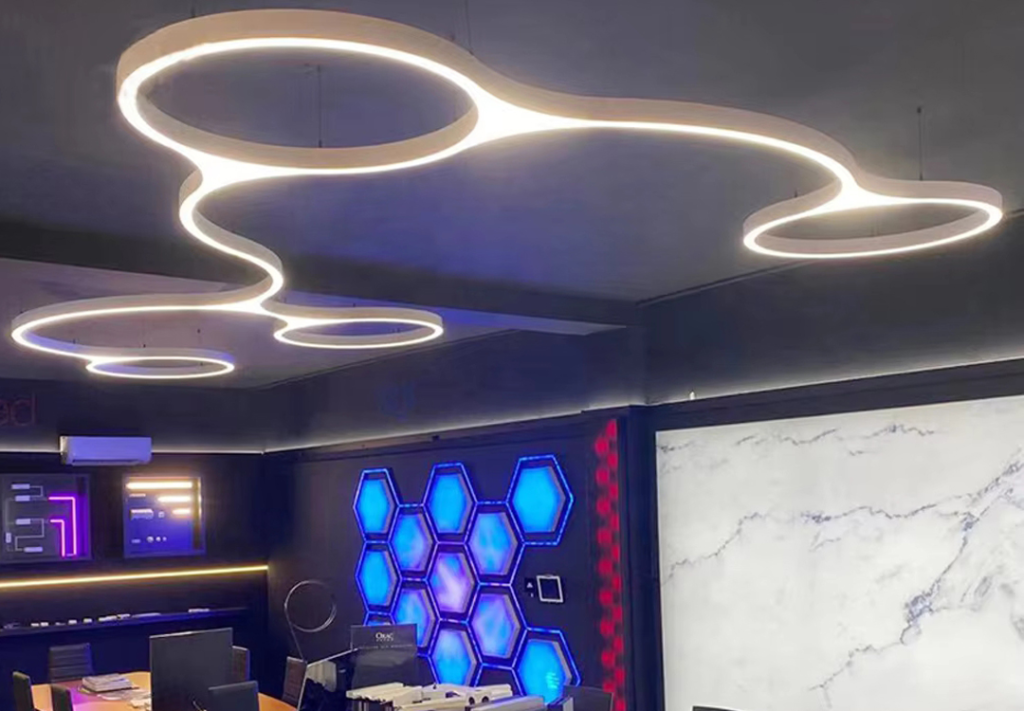
Wo kann man biegsame lineare Lichter in loser Schüttung kaufen?
Wenn Sie biegbare lineare Lichter in großen Mengen für architektonische, kommerzielle oder kundenspezifische Beleuchtungsprojekte kaufen möchten, ist es wichtig, mit einem professionellen Hersteller zusammenzuarbeiten, der eine Vielzahl von Profiloptionen, präzisen Biegemöglichkeiten und vollständige Anpassungsservices bietet. Hochwertige biegbare Linearleuchten sollten eine gleichbleibende Lichtleistung, eine nahtlose Integration in Ihr Design und eine langfristige Haltbarkeit bieten.
Bei der Beschaffung in großen Mengen sollten Sie Lieferanten berücksichtigen, die:
hauseigene Aluminium-Extrusions- und Biegefähigkeiten
Bieten Sie eine große Auswahl an Formen, einschließlich Zickzack-, Rund-, Wellen- und Sonderanfertigungen
Unterstützung von OEM/ODM-Anpassungen für Profilgröße, Farbtemperatur und Steuerungssysteme
Bieten Sie technische Unterstützung und eine schnelle Produktionsumkehr für Projekttermine
Sicherstellen von internationalen Zertifizierungen wie CE, RoHS, UL oder ETL für die Einhaltung
Ob Distributor, Lichtbauunternehmen oder Designstudio, die Auswahl des richtigen Lieferanten stellt sicher, dass Ihr Projekt sowohl optisch als auch technisch auffällt.
Suchen Sie eine zuverlässige, werksseitig direkt biegbare Linearbeleuchtung? in Verbindung stehen Signlite Um Muster zu erkunden, holen Sie sich ein Angebot oder diskutieren Sie maßgeschneiderte Lösungen, die auf Ihre Projektanforderungen zugeschnitten sind.
